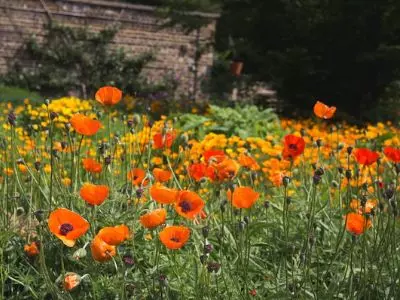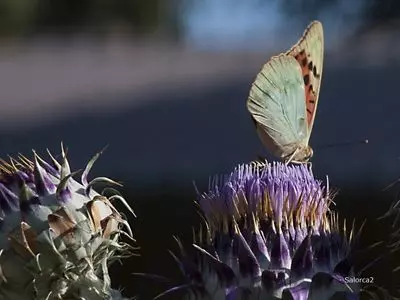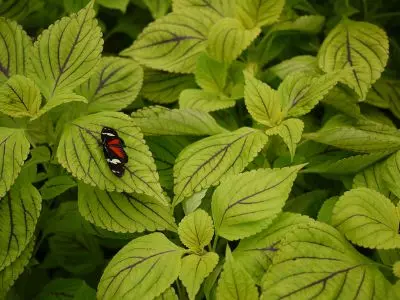Besides humans, there are various other flora and fauna that live on earth, providing many benefits to both our environment and daily lives.
But what is flora and fauna?
Flora and fauna are broad Latin terms used to define plants and animals that once lived in or are currently living in an ecosystem.
In this post, we are going to look closer at flora and fauna and why they are so important for our entire ecosystem.
What is Flora?

Flora is a Latin term used to define plants that once lived or are currently living in an ecosystem.
There are many different types of flora.
Some of them include:
- Fossil Flora
- Native Flora
- Horticultural Flora
- Weed Flora
Fossil Flora
Fossil Flora refers to a species of plants that came from prehistoric times.
These species could include everything from Archaeopteris to Pachypteris.
The recovery and identification of Fossil Flora is a branch of Botany called Paleobotany.
Native Flora
Native Flora refers to a species of plants that are specific to a region.
An example of a Native Flora would be Cacti.
While Cacti have the ability to grow in various regions, they are most known to be seen in deserts and other dry areas.
Horticultural Flora
Horticultural Flora refers to a species of plants that have been cultivated by humans.
This type of Flora is often seen in the form of gardens and decorative displays.
An example of a Horticultural Flora would be Daisy flowers.
Weed Flora
Weed Flora refers to a species of plants that are either undesirable in a region or invasive to other flora.
An example of Weed Flora would be wildflowers growing in a garden filled with fruit and vegetable plants.
What is Fauna?

Fauna is a Latin term used to define animals that once lived or are currently living in an ecosystem.
There are many different types of fauna.
Some of them include:
- Avifauna
- Piscifauna
- Microfauna
- Cryptofauna
Avifauna
Avifauna refers to the species of animals that would be classified as birds and can include anything from Penguins to Peacocks.
Avifauna is also defined based on its specific regions.
Piscifauna
Piscifauna refers to the species of animals that would be classified as fish.
All different types of fish are included as Piscifauna – Sharks, Whales, and even Trout.
Along with these sea creatures is Epifauna, which are animals that live at the bottom of the ocean.
Microfauna
Microfauna refers to a species of animals that would be classified as microscopic life.
Species within this classification need to display signs of animal-like characteristics.
An example of Microfauna would be Rotifers.
Megafauna
Megafauna refers to a species of animals that would be classified as very large.
The classification of Megafauna is that the animal’s mass must be equal to or greater than a human’s.
An example of Megafauna would be an Elephant.
Want to see Flora and Fauna in action? Check out this great documentary displaying many examples:
What is the Difference Between Flora And Fauna?
There are a few distinct differences between flora and fauna.
| Flora | Fauna |
| Defined as all plant life | Defined as all animal life |
| Almost always generates their own food | Needs to acquire food from plants and other animals |
| Immobile | Mobile |
| Has a cell wall | Does not have a cell wall |
What Are Flora And Fauna In Geography?

Both flora and fauna are oftentimes classified based on the regions they live in.
Therefore, in terms of geography, both can be defined as organisms living in a specific region at a specific time.
- For flora, this would be classified as the plant life of a region.
- For fauna, this would be classified as the animal life of a region.
The Importance of Flora and Fauna
Flora and fauna are more than simply plants and animals.
The functionality of different species on our planet is quite vast compared to what we see on the surface.
From being a source of renewable energy to providing food, flora and fauna are very important.
Flora and Fauna Keep Us Alive
Living a day without plants and animals would not be possible.
These species allow us to have an ecological balance.
The most important piece within our ecological balance is the production of oxygen.
Oxygen is generated by flora that is used by fauna who then take that oxygen to breathe and release it as carbon dioxide.
Carbon dioxide is then used by flora to complete Photosynthesis.
This relationship between flora and fauna is beyond symbolic. Neither of the two could survive without the other.
The cycle of life and a balanced ecosystem is a bond in biology that can not be broken.
But the bond between humans and both flora and fauna is just as strong.
- As humans, we receive 90% of our medicine directly from flora.
- Our water supply also would not be possible without flora.
- And finally, all of our food comes from production given by Flora.
We are able to determine which flora and fauna can help with medical advancements, water supply, and food consumption, by conducting studies in labs and habitats.
Fauna also plays a major role in food production.
The existence of different types of fauna preying on other fauna, allows them to not only survive but offer food options for other species higher in the chain.
Giving an example of the food chain process, insect fauna (arthropods) might feed off microfauna.
Smaller animals may then prey on those insects and the process continues moving along up to megafauna.
Flora and Fauna Add Value to Our Economies
Aside from the obvious benefits our food supply receives from flora and fauna, flora and fauna are also sources of economic growth simply by just existing.
Many cities around the world are listed as travel destinations due to their region’s Flora and fauna.
Whether it be the beaches and ocean of the Caribbean or various zoos and arboretums, flora and fauna bring in a lot of visitors.
Even more so, areas that have national parks, historic sites, wildlife refuges, and even camping grounds, bring in a lot of attention due to the various flora and fauna.
But that’s not all.
Flora and fauna in some areas, such as the Amazon rainforest, can bring in different scientific teams to further analyze the plant and animal life of the region.
Scientific research not only tells us more about the flora and fauna but also may provide humans with more benefits and often leads to the discovery of new species.
Flora and Fauna Can Help Defeat Energy Issues
Energy consumption is the biggest issue the planet faces today.
With the usage of cars, planes, and other transportation, our habits are quickly adding to at least 30 specific environmental issues on our planet.
These unfortunate events have caused us to look to flora and fauna for what we call Renewable Energy.
Renewable energy sources are alternatives to fossil fuels that can be restored after being used.
The two biggest sources of renewable energy would be the sun and water.
While the sun isn’t directly flora or fauna, neither would be able to fully survive without sunlight. The same goes for water.
Water is created naturally through the use of oxygen. Oxygen is created by flora. Making water without flora would be dangerous.
Through the use of various generators and manmade structures, it is possible to use the water we already have to create more renewable energy.
Some of these options include tidal stream generators, man-made lagoons, and barrages.
Even though these methods might seem like great advances in development and technology, it has been proven that they also pose risks to various sea and seaside fauna.
Read our related article where we discuss the Tidal Energy Pros and Cons for more information.
FAQ (Frequently Asked Questions)
What Are the 5 Types of Plants?
There are 5 different types of plants (flora).
- Herbs
- Shrubs
- Trees
- Climbers
- Creepers
Each individual classification is determined based on Growth Habits.
Growth habits differ based on the strength of stems.
Small plants like herbs and shrubs have softer green stems, while trees have heavy brown bark.
What Are the 8 Classes of Animals?
There are 8 different types of animals (fauna).
- Vertebrates
- Invertebrates
- Birds
- Reptiles
- Mammals
- Amphibians
- Fish
- Arthropods
Each of these animal classifications can be grouped in different ways and can be grouped by skeleton type, skin type, and even birthing aspects.
Is Bacteria Flora or Fauna?
A population of bacteria is known as flora.
Being organisms that are not active like Microfauna, bacteria are oftentimes referred to as Microbiota in microbiology.
Are Humans Fauna?
Yes.
Since fauna refers to animal life that has lived or is currently living in a specific region, humans are animals that would classify as fauna.
Are Insects a Fauna?
Yes.
Insects are small animals and would be considered Fauna. Since they are more than just bacteria or microscopic life, they are known as Arthropods.
Is Mushroom a Flora?
No.
Mushrooms obtain their nutrients differently than both plants and animals. Due to this very important difference, mushrooms would not be classified as flora.
They are fungi.
What Language Are Flora and Fauna?
Flora and fauna are Latin words.
The word flora is derived from the word floral. In mythology, flora translates to the goddess of the flower.
Fauna is sometimes known as fauns or forest spirits. Fauna’s mythological translation would be the goddess of fertility.
Final Thoughts
Aside from the life-altering benefits each provides, flora and fauna create resources for us naturally to combat environmental issues such as climate change and water supply.
Finding ways to further evaluate flora and fauna and preserve their habitats have endless possibilities.
By preserving flora and fauna, we as humans can become more connected with nature, making us feel more fulfilled in our contributions.
